Meet the Farmed Animals in the Philippines
By Jane B.
Did you know that the most common farmed animals in the Philippines have a lot to offer, more than just being farmed for food? This blog looks into the profiles of four farmed animals, namely pigs, cows, chicken, and fish!
PIGS
There are currently 6 breeds of pigs in the Philippines: The Landrace breed is white or pink in color and has small, droopy ears. Similar to the Landrace is the Large White. It is also white in color but has ears that are slightly erect as compared to that of the landrace. The Hampshire pig breed is black but has a white or pink ‘belt’ that runs from its neck to its front feet. Meanwhile, the Duroc is distinguished by its reddish to dark brown color. The Pietrain is a pig breed that is known for its black spots scattered around its white or pink body. Lastly, the Philippine native pig is a breed that’s resilient against sickness and can survive in natural environments.
Apart from the number of breeds that exist in the Philippines, did you know that there are far more interesting facts about pigs in general?
For instance, pigs are said to be more intelligent than three-year-old humans. In fact, these clever creatures possess an impressive ability to solve problems and communicate, using oinks, grunts, and squeals to convey their thoughts and emotions. If us humans also use various sounds to express pain, excitement, and other emotions, well, pigs prove that they can too!
But… it doesn't stop there! Pigs can also be sly, employing tricks to outsmart each other in order to gain temporary food advantages. Everything for food, right?
Thus, whether it's navigating mazes or devising creative solutions, pigs are creatures that never fail to showcase their remarkable intelligence and resourcefulness.
COWS
The Philippine cow originated from Chinese and Mexican cattle, and what makes it distinguishable is its small hump.
Beyond their gentle demeanor and serene presence, cows possess fascinating behaviors and social dynamics.
How do you handle stressful situations? Talk to a friend? Eat your favorite food? Well, cows have their own coping mechanism in handling such scenarios: they lick each other to help remain calm in stressful situations. This soothing ritual reflects their strong familial bonds and their instinctual drive to nurture and support one another.
These creatures also form social "grooming partnerships," similar to the close relationships observed in chimpanzees. Through mutual grooming and affectionate interactions, cows reinforce bonds of trust and camaraderie within their herds, creating a harmonious environment for all.
CHICKENS
From Boholano to Darag, Philippine chickens bear the names of their localities with pride, reflecting their deep-rooted connection to the country’s diverse landscapes.
Have you ever had a bestfriend that always comforts you in times of despair? Well, did you know that chickens are great comforters? In fact, they demonstrate empathy and they recognize stress in their fellow flock members. These perceptive creatures possess a keen awareness of each other's emotions, offering comfort and support in times of need.
But that's not all! Chickens also exhibit strong individual personalities and form lasting friendships, forging deep connections that enrich their lives. As they anticipate the future and adjust their behavior to plan for it, chickens showcase a level of intelligence and foresight that continues to astound researchers and animal lovers.
FISH
In the blue waters surrounding our islands, fish flourish in abundance. Some of the most popular farmed fish in the country are milkfish, tilapia, grouper, shrimp, carp and catfish.
While most Filipinos see them primarily as food, did you know that fishes actually experience emotions? In fact, they feel positive and negative emotional states, similar to mammals and other animals. From joyous playfulness to profound sorrow, fishes navigate a rich spectrum of emotions that shape their lives and interactions.
Apart from the fact that fishes feel emotions, they also enjoy playing games and even seek out human interaction, as if inviting us into their world. Or maybe they’re just wanderin' free, wishing they could be ~part of our world?~
Kidding aside, fish also pass down cultural knowledge from generation to generation. For example, when a fish swims alongside a shoal along a particular route, it learns and retains that path, which it then follows when navigating independently.
PARTING WORDS
As we reflect on the beauty and talents of farmed animals in the Philippines, let us pledge to be stewards of their well-being and champions of their rights. Through our actions and advocacy, may we create a world where all creatures, great and small, are treated with the empathy that they deserve.
References:
Faunalytics. (2021, November 19). Faunalytics Fundamentals - Farmed animals. https://faunalytics.org/fundamentals-farmed-animals/
Institute of Animal Law of Asia - Animals in Agriculture in the Philippines. (n.d.). https://www.ialasia.org/projects/animals-in-agriculture-in-the-philippines
Mason, I.L. 1996. A World Dictionary of Livestock Breeds, Types and Varieties. Fourth Edition. C.A.B International. 273 pp.
Native Chicken – Industry Strategic Science and Technology Plans (ISPs) platform. (n.d.). https://ispweb.pcaarrd.dost.gov.ph/native-chicken/
Page, M. L. (2021, April 7). Animal culture is so common that even fish and flies have it. New Scientist. https://www.newscientist.com/article/2273450-animal-culture-is-so-common-that-even-fish-and-flies-have-it/
Philippine native Cattle - Oklahoma State University. (2021, July 19). https://breeds.okstate.edu/cattle/philippine-native-cattle.html
Taculao, P. B. (2020, October 16). Basic swine production and management, part 1: Finding the right breed. Manila Bulletin. https://mb.com.ph/2020/10/16/basic-swine-production-and-management-part-1-finding-the-right-breed/#google_vignette
Veterinaria Digital S.A. (2022, October 25). Aquaculture production in the Philippines. Veterinaria Digital. https://www.veterinariadigital.com/en/articulos/aquaculture-production-in-the-philippines/





